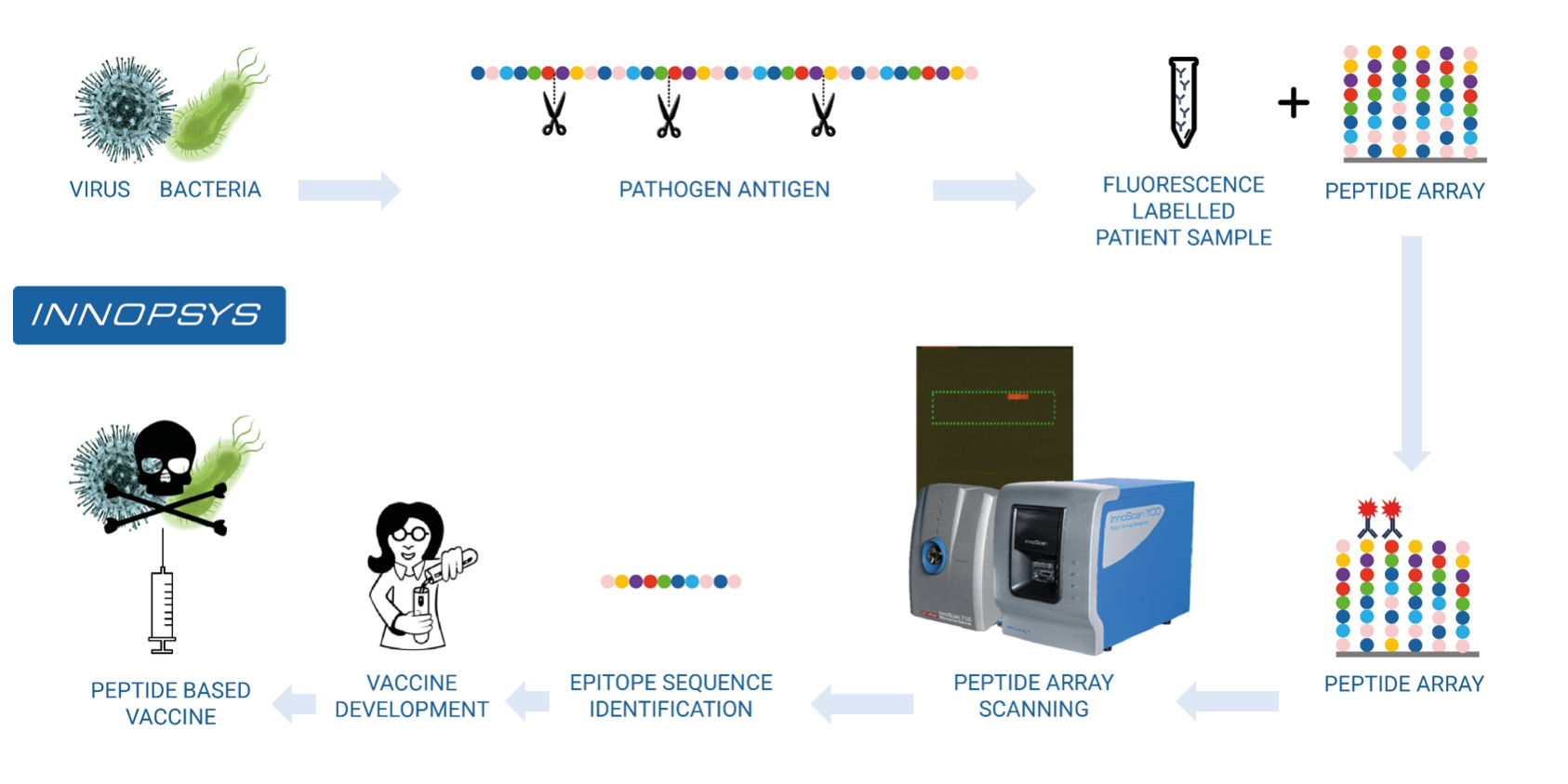Peptide arrays technology is an ideal tool to identify epitopes and develop synthetic vaccine.
Vaccination, one of the main work of Jenner in the 18th century, aims to stimulate immune responses against pathogens and microbes. This is the most effective method for protecting individuals from infections. Persistent vaccination has eradicated some diseases as smallpox . Exposition of a patient to an attenuated or inactivated version of the pathogen is the basis of the current vaccines. However, some cases of infection due to vaccination can occur. According to the WHO (World Health Organization), synthetic vaccines show less risk of contamination or unwanted side effects.
To develop peptide-based synthetic vaccine, it is necessary to understand immune response through the study of antibody-epitope interactions.
An epitope can be defined as the part of a pathogen inducing a protective immune response. Thus, it is possible to design rational vaccines with synthetic peptides including epitope sequences. Therefore, it is important to identify epitopes in order to integrate them in synthetic vaccine development.
The Medical Subjects Headings (MeSH) defines epitope mapping as the different methods used for studying the interactions of antibodies with specific antigen peptide sequences. One of these methodologies is peptide arrays. This high throughput technology allows a rapid epitope screening. Indeed, in a single experiment, researchers can analyze the interactions between thousands of spotted peptides and antibody or patient samples.
Fluorescence peptide arrays allow the decrease of chemicals and biologicals use, improving efficiency compared to other methods.
The InnoScan fluorescence detection, and scan rapidity, increase peptide arrays potential. Innopsys collaborates with major peptide array manufacturers to improve scan and analysis workflow. We recommend to use the infrared detection of the InnoScan 710-IR to improve sensitivity while decreasing support background. While the InnoScan 1100 enables high resolution imaging necessary to HD peptide arrays.
Therefore, due to their large capacity and efficiency, state-of-the art laboratories use peptide array technology with Innopsys scanners to identify epitopes and develop synthetic vaccines.
